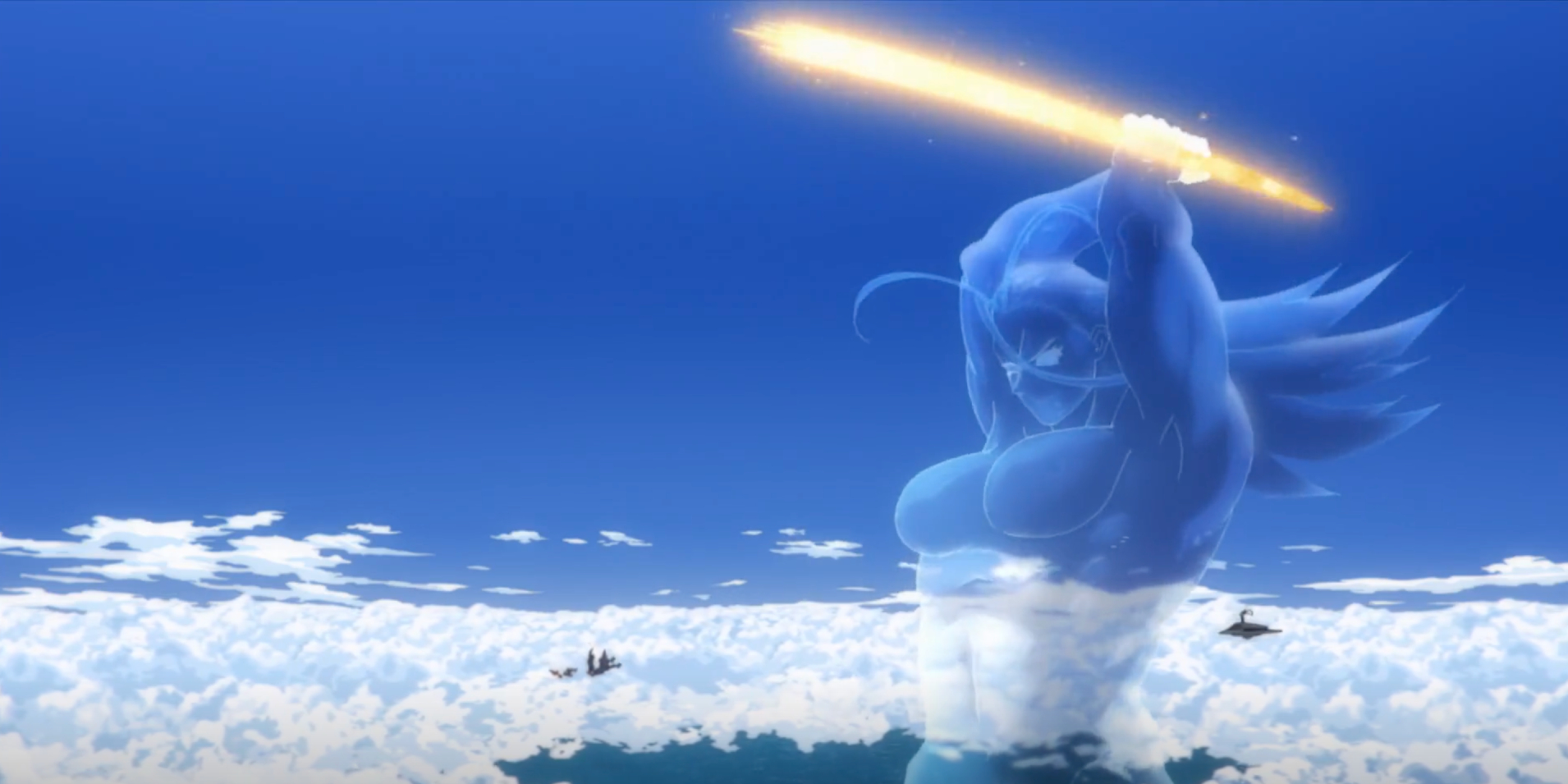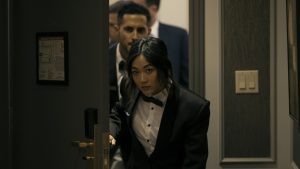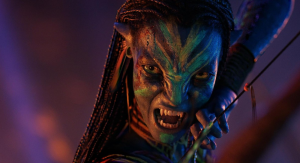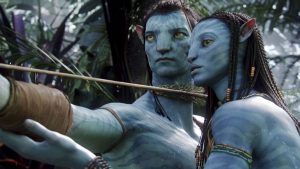
This article contains spoilers for My Hero Academia season 7 episode 1.
My Hero Academia is an entertaining shonen anime that cleverly riffs on the superhero genre. This means that epic superpowered showdowns are par for the course where grandiose villains threaten to reshape the world through malevolent means. However, the anime’s most recent storyline that concludes season 6 and kicks off the seventh season descends hero society into all-out war. All For One, society’s most evil and dangerous villain, has triggered a parasitic relationship with Tomura Shigaraki that’s blended their consciousness to become the ultimate antagonist. Japan’s Pro Heroes have proven to be useless against Shigaraki’s powerful awakening and season six ends on a suspenseful cliffhanger that recruits international reinforcements to take on this apocalyptic threat.
My Hero Academia’s season seven premiere, “In the Nick of Time! A Big-Time Maverick from the West!” is one big showcase for Star and Stripe, America’s Number One Pro Hero. Star and Stripe’s arrival facilitates a legendary battle, but it also provides enlightening commentary on American heroes versus Japanese ones. In doing so, My Hero Academia’s presentation of the American dream proves to be distinctly different from another popular superhero who’s stepped in Americana, The Boys’ Homelander.
My Hero Academia has been primarily set in Japan. However, it’s been very clear that superheroes and villains are a global concern. The anime has previously made brief detours to other countries, but up until this point there’s been a dominant belief in the anime’s narrative that Japan is the home of the strongest characters with the most powerful Quirks. My Hero Academia’s seventh season premiere shatters this paradigm with a startling wake-up call. What’s so significant about Star and Stripe is that she’s not just a powerful American Pro Hero, but essentially the living embodiment of Lady Liberty and the Star-Spangled Banner. She endlessly exudes American pride, which casts her in a very different light than if she were just some nondescript Western savior. Star and Stripe becomes My Hero Academia’s interpretation of how America is an all-powerful, destructive force of nature that’s called in when the world needs to be shattered.
“In the Nick of Time! A Big-Time Maverick from the West!” pointedly refers to the United States as the land of “freedom and heroes.” There’s extreme reverence that’s present in the anime’s discussion of America and how it’s this invincible power that can accomplish what Japan can’t, despite their prolific Pro Heroes. Star and Stripe is treated like Japan’s final gambit against Shigaraki and she comes wielding an army’s worth of artillery and firepower. These types of weapons of mass destruction have previously been absent in My Hero Academia, so Star and Stripe makes quite the statement when she rides in on a fighter jet and commands Tiamat missiles to level her target. It’s no coincidence that she makes her entrance on war machines rather than the airborne Nomu monsters that Shigaraki flies on.
My Hero Academia engages in some compelling commentary through Star and Stripe regarding America’s reliance on warfare, right down to the country’s use of atomic bombs on Japan during World War II. Star and Stripe wields the “United Hyper Max Output Laser” on Shigaraki, which feels akin to My Hero Academia’s version of nuclear warfare. Star and Stripe doesn’t just want to win her battle, but to truly “pulverize” her target and “burn him into ashes” until there’s nothing left. It’s the most destructive act that’s ever been seen in My Hero Academia that draws chilling parallels to America’s mentality in 1945. Additionally, Star and Stripe’s Quirk – New Order – can literally rewrite reality with a very American-coded “Because I said so” quality. It’s a Quirk that seems too overpowered, albeit one that’s perfect for a country that’s used to playing by its own rules and proving that they’re the best.
An interesting feedback loop takes place with Star and Stripe, whose whole look, motif, and personality is inspired by All Might. She’s like the United States’ cosplay of Japan, which was already riffing on America with All Might. However, this imitation is treated to be superior to the original. America once again trumps Japan, even when Japan is doing its best USA impression. There’s a subtle moment in this premiere where it’s revealed that Deku’s dorm room curtains are an American flag, which speaks to the pervasive nature of the United States’ power and what it represents. These curtains aren’t an act of oppression or an admission of defeat. They’re an inspirational symbol of hope and freedom.
Star and Stripe isn’t My Hero Academia’s first look at American Pro Heroes, but she’s by far the most significant. This powerful character becomes a fascinating cultural counterpoint to another popular American branded superhero from pop culture — Homelander from The Boys. Homelander, while paying homage to Superman, was conceived as the personification of Bush-Era America and this near-invincible superpower that views himself as the best. Homelander, over time, has become more of a direct analogue for Donald Trump where megalomania and xenophobia can function in plain sight and receive praise. Star and Stripe — and All Might — aren’t like this at all, despite the pomp and circumstance behind their American pageantry.
The closest thing that My Hero Academia has to Homelander would have to be All For One — an actual villain — rather than its American-centric heroes. Curiously, Star and Stripe and All Might represent the strength and ego of America, but with none of the hatred, persecution, or hubris. They’re cocky and brash, but as a way to inspire and empower everyone – especially the helpless underdogs – not just “true Americans.” They’re an idealist vision of what America can be, stripped of its worst qualities, and it’s fascinating that an anime production would position them as Japan’s greatest chance for hope. It takes an outside voice and point of view — let alone one that’s been decimated by America — to see the country in its purest and most righteous form.
It’s a deeply uplifting perspective that speaks to My Hero Academia’s intense optimism that drives Midoriya and the rest of its heroes forward. It doesn’t admonish America for its past and current sins, but rather turns to them for support and the answer to its problems in a world where everyone needs to work together rather than attack one another. It’s this same ideology that makes Midoriya believe that Tomura Shigaraki can be saved and that destruction isn’t the only option here. My Hero Academia’s seventh season starts strong with its epic Star and Stripe supremacy, but the fight against Shigaraki and All For One rages on. Star and Stripe is presented as a catastrophic superpower who has a whole army behind her. However, it’s unlikely that she’ll actually win this fight and eliminate this evil. The heroes are going to need far more than American patriotism and Plus Ultra platitudes to end this war.
My Hero Academia season 7 streams on Saturdays on Crunchyroll
The post My Hero Academia Just Introduced The Anti-Homelander American Hero appeared first on Den of Geek.





